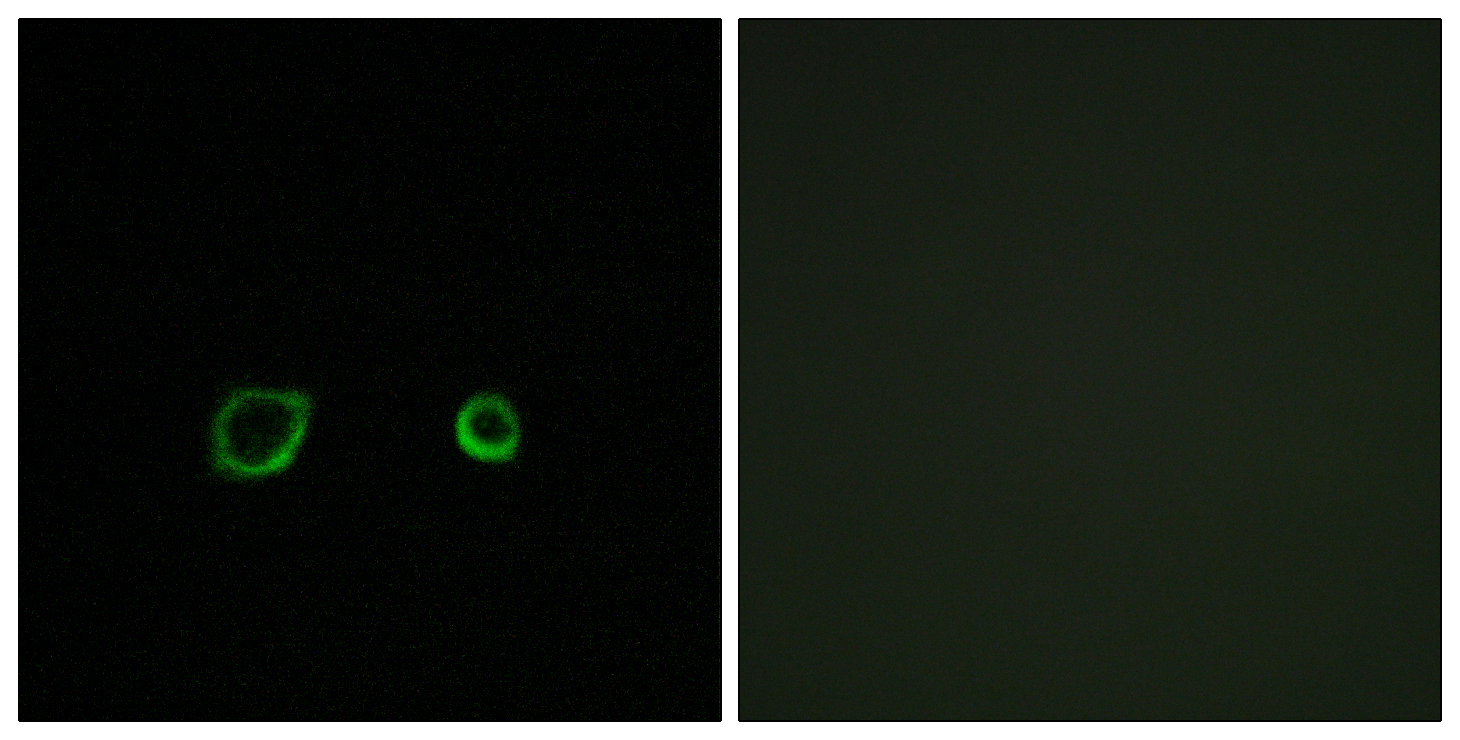Contactin 4 Polyclonal Antibody
- 货号:YT1054
- 应用:WB;IHC;IF;ELISA
- 种属:Human;Mouse;Rat
- 免疫原:
- The antiserum was produced against synthesized peptide derived from human CNTN4. AA range:661-710
- 特异性:
- Contactin 4 Polyclonal Antibody detects endogenous levels of Contactin 4 protein.
- 组成:
- Liquid in PBS containing 50% glycerol, 0.5% BSA and 0.02% sodium azide.
- 来源:
- Polyclonal, Rabbit,IgG
- 稀释:
- WB 1:500 - 1:2000. IHC 1:100 - 1:300. ELISA: 1:40000.. IF 1:50-200
- 纯化工艺:
- The antibody was affinity-purified from rabbit antiserum by affinity-chromatography using epitope-specific immunogen.
- 储存:
- -15°C to -25°C/1 year(Do not lower than -25°C)
- 其他名称:
- CNTN4;Contactin-4;Brain-derived immunoglobulin superfamily protein 2;BIG-2
- 背景:
- This gene encodes a member of the contactin family of immunoglobulins. Contactins are axon-associated cell adhesion molecules that function in neuronal network formation and plasticity. The encoded protein is a glycosylphosphatidylinositol-anchored neuronal membrane protein that may play a role in the formation of axon connections in the developing nervous system. Deletion or mutation of this gene may play a role in 3p deletion syndrome and autism spectrum disorders. Alternative splicing results in multiple transcript variants. [provided by RefSeq, May 2011],
- 功能:
- disease:A chromosomal aberration disrupting CNTN4 has been found in a boy with characteristic physical features of 3p deletion syndrome (3PDS). Translocation t(3;10)(p26;q26). 3PDS is a rare contiguous gene disorder involving the loss of the telomeric portion of the short arm of chromosome 3 and characterized by developmental delay, growth retardation, and dysmorphic features.,function:Contactins mediate cell surface interactions during nervous system development. Has some neurite outgrowth-promoting activity. May be involved in synaptogenesis.,induction:By retinoic acid, suggesting that it may act in response to differentiating agents.,similarity:Belongs to the immunoglobulin superfamily. Contactin family.,similarity:Contains 4 fibronectin type-III domains.,similarity:Contains 6 Ig-like C2-type (immunoglobulin-like) domains.,tissue specificity:Mainly expressed in brain. Highly expressed
- 细胞定位:
- Cell membrane; Lipid-anchor, GPI-anchor. Secreted .
- 组织表达:
- Mainly expressed in brain. Highly expressed in cerebellum and weakly expressed in corpus callosum, caudate nucleus, amygdala and spinal cord. Also expressed in testis, pancreas, thyroid, uterus, small intestine and kidney. Not expressed in skeletal muscle. Isoform 2 is weakly expressed in cerebral cortex.

- Immunofluorescence analysis of A549 cells, using CNTN4 Antibody. The picture on the right is blocked with the synthesized peptide.




